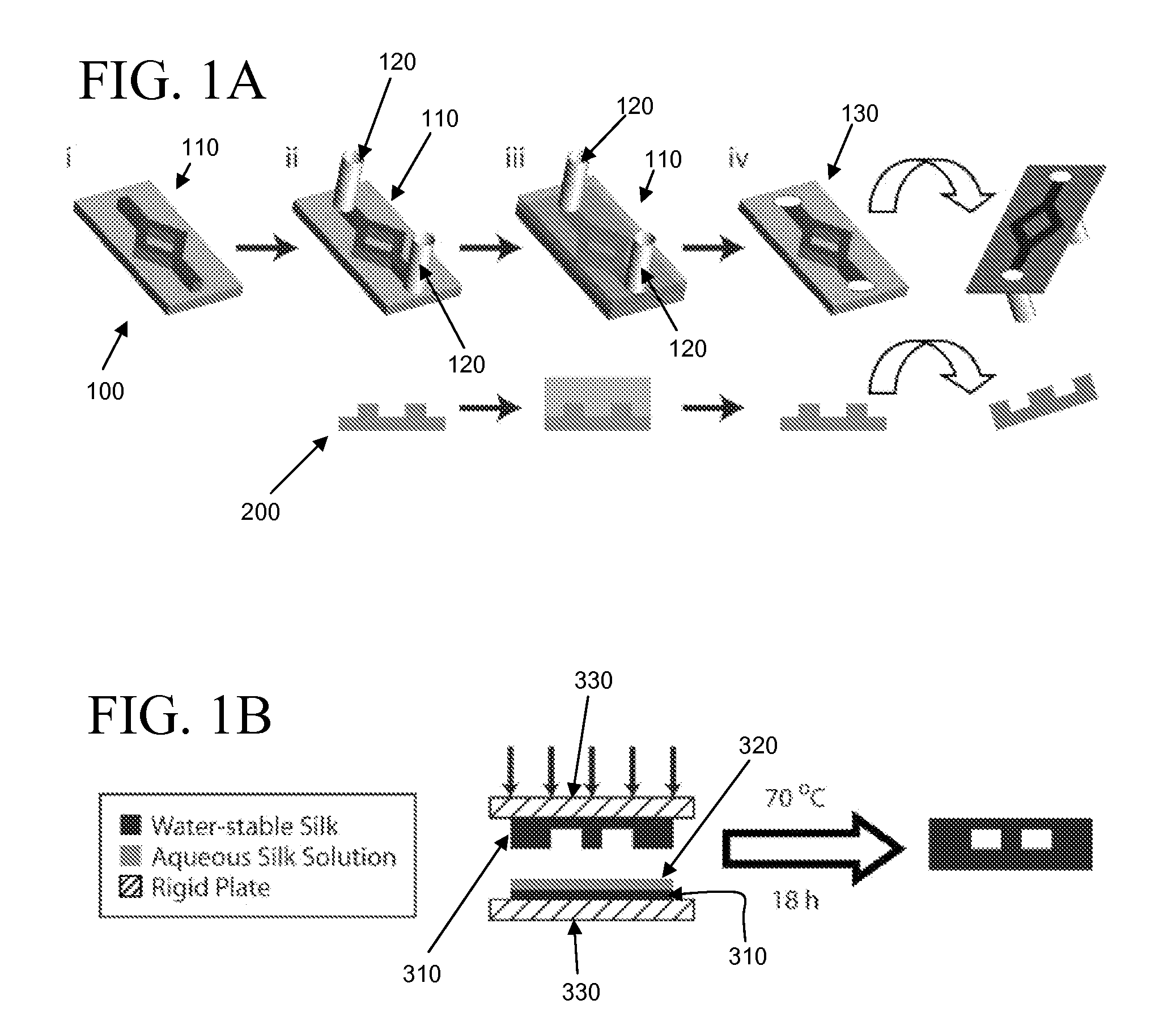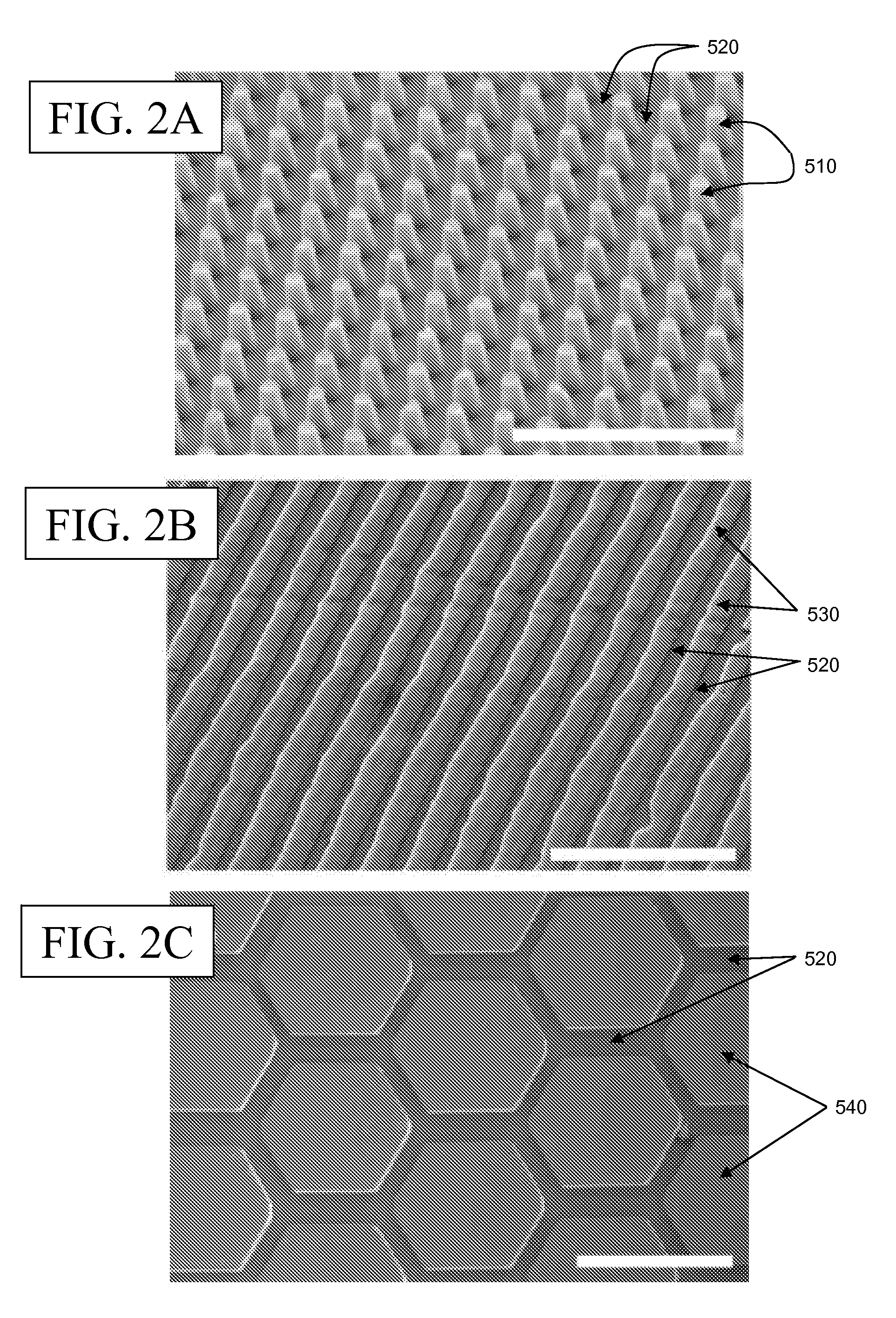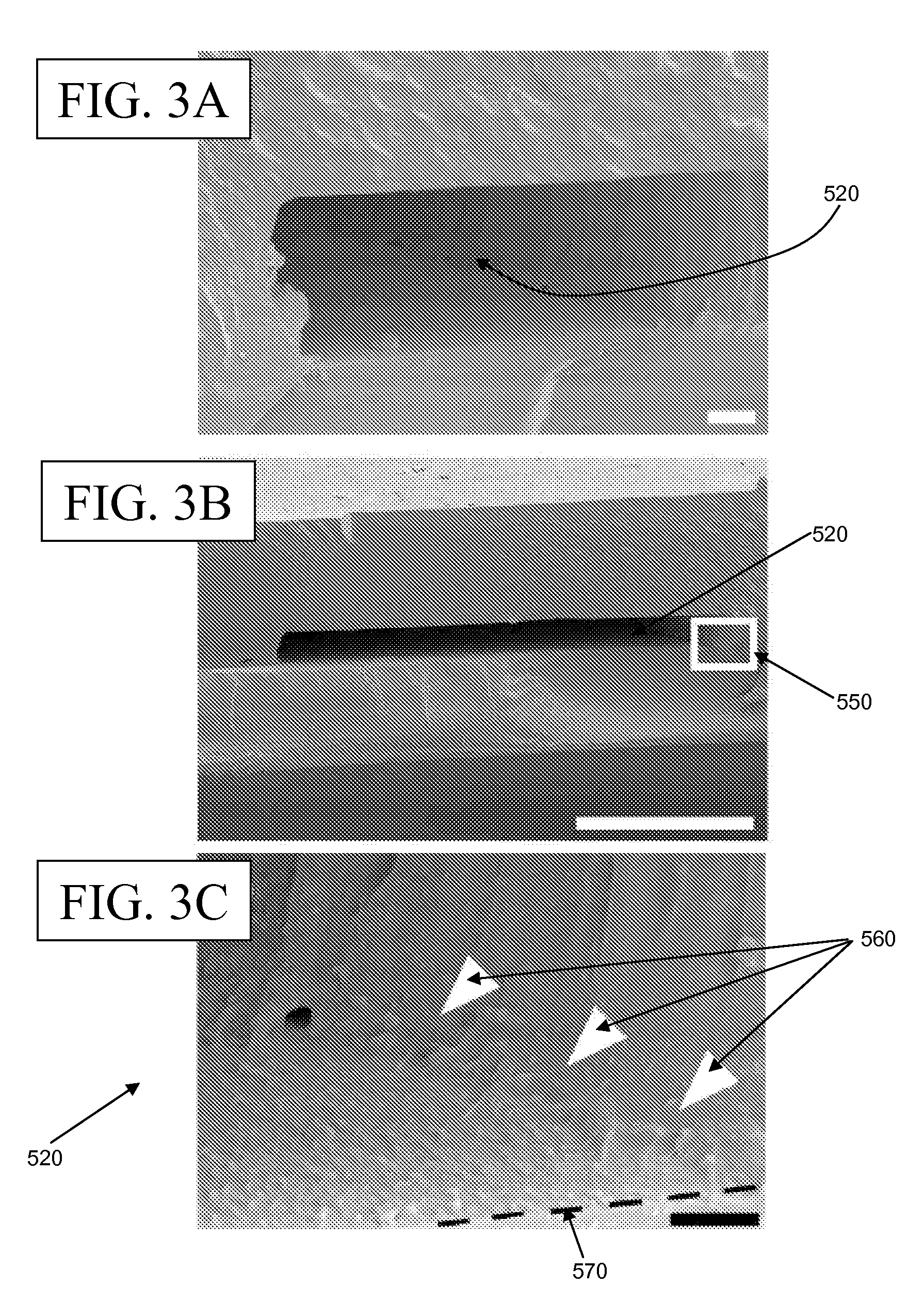Microfluidic device comprising silk films coupled to form a microchannel
a microfluidic device and silk film technology, applied in the field of silk-based systems and devices, can solve the problems of many existing devices not fully degradable, adverse health, environmental, safety, and security considerations
- Summary
- Abstract
- Description
- Claims
- Application Information
AI Technical Summary
Benefits of technology
Problems solved by technology
Method used
Image
Examples
example
[0086]The following example describes a representative method for fabricating a microfluidic device from silk. Following fabrication of the device, fluid was flowed through the microchannels to confirm patent integrity. Cells were then seeded within the microchannels of the device and their function and morphology was assessed.
A. Materials and Methods
[0087]A.1 Preparation of Micromolded Silk Fibroin Films
[0088]Microfluidic networks with a constant shear design were chosen for device fabrication. The finalized mask layouts were converted to DXF files using AutoCAD 2000 and printed onto 1 / 20-mil transparencies (International Phototool, Colorado Springs, Colo.). Standard photolithographic and soft-lithography techniques were used in a mold-transfer process. Briefly, 100 mm diameter silicon wafers were patterned with SU-82 000 photoresist (Microchem, Newton, Mass.) according to the manufacturer's recommendations to produce a “positive mold.” PDMS (Sylgard Elastomer Kit, Essex Group, Edi...
PUM
| Property | Measurement | Unit |
|---|---|---|
| diameter | aaaaa | aaaaa |
| temperature | aaaaa | aaaaa |
| widths | aaaaa | aaaaa |
Abstract
Description
Claims
Application Information
 Login to View More
Login to View More - R&D
- Intellectual Property
- Life Sciences
- Materials
- Tech Scout
- Unparalleled Data Quality
- Higher Quality Content
- 60% Fewer Hallucinations
Browse by: Latest US Patents, China's latest patents, Technical Efficacy Thesaurus, Application Domain, Technology Topic, Popular Technical Reports.
© 2025 PatSnap. All rights reserved.Legal|Privacy policy|Modern Slavery Act Transparency Statement|Sitemap|About US| Contact US: help@patsnap.com



